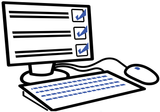What Are Passkeys? [Subscribers]
![What Are Passkeys? [Subscribers]](/content/images/size/w1200/2024/11/Dn2ehuz8.jpg)
What Are Passkeys and Why Are They the Future of Digital Security?
In the age of digital everything, we’ve come to rely heavily on usernames and passwords for security. But let’s face it – juggling dozens of passwords (or reusing the same one, despite knowing better) can feel like an endless, often insecure, chore. Enter passkeys – a modern, more secure way to access online accounts that doesn’t require remembering any complex strings of letters, numbers, and symbols.
But what exactly is a passkey, and how does it work? Let's break it down, using some fun metaphors.
Here are five questions that the post addresses:
- What exactly is a passkey, and how is it different from the traditional passwords we’re used to?
- Is a passkey something I must carry around, like a USB stick, or is it just digital?
- How do passkeys work with face or fingerprint recognition on my device—is that part of the passkey itself?
- Who creates the passkey when I set up an account—me, the website, or my device?
- Are passkeys more secure than passwords, and how do they protect me from data breaches?
These questions help make the concept of passkeys more relatable and address the practical and security aspects people are curious about.
The Basics: It’s Not a Physical Key, But a Digital One
When we think of security keys, we might picture a small USB stick or even an old-school metal key. However, passkeys aren’t physical at all. Digital credentials live on your device—like a secure phrase stored in your phone or computer. There's no need to put anything on your keyring!
According to Microsoft, “Passkeys, which are unique to each person and device, offer individuals and organizations an easy, convenient way to sign in to online accounts” (Microsoft) securely.

Think of It Like a Speakeasy Password
Imagine trying to get into a secret club during Prohibition. To get in, you’d need a special phrase. When you go for the first time, you prove who you are. Once you’re “in,” you’re given a secret phrase known only to you and the bouncer. The next time you want to get in, the bouncer checks your phrase, confirms it matches theirs, and lets you in.


![Bluesky’s Promise of User Control: What Bluesky Gets Right, and the Challenges it Faces [Subscribers]](/content/images/size/w600/2024/11/Link-Thumbnail-6-3.jpg)
![The First Things You Should Do with Your New Windows 11 Computer - Part 1 [Subscribers]](/content/images/size/w600/2024/11/8f570f0e-9b7f-4878-9544-075d9226325f_1024x768-2.webp)
![14 Computer Myths You Probably Still Believe [Subscribers]](/content/images/size/w600/2024/11/LoQTbr6g.jpg)
![Tech News You Might Have Missed - Issue #2 [Subscribers]](/content/images/size/w600/2024/11/news-5238315_1280-2.jpg)